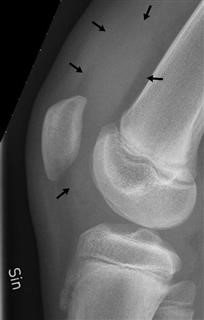The Infertility Website
Infertility Exams
You found the top source for total information and resources for Infertility Exams online.
Orchitis The most common cause of acquired testicular failure in adults is viral orchitis, such as that caused by the mumps virus, echovirus, or group B arbovirus. Nonchromosomal testicular failure Testicular failure that is nonchromosomal in origin may be idiopathic or acquired by gonadotoxic drugs, radiation, orchitis, trauma, or torsion. For women aged 35, about 94% who have regular unprotected sexual intercourse get pregnant after three years of trying. Some causes, such as hyperprolactinemia, are reversible with proper treatment. Causes of this kind of infertility include: Retrograde ejaculation.
The sperm can either be mixed with the eggs to allow normal fertilization (conventional insemination) or by injecting one sperm into each mature egg (ICSI). For this reason, it’s recommended that couples who’ve been trying to get pregnant for over a year without success seek the advice of a doctor. The pathophysiology of the disease is not well understood, but a massive extravascular accumulation of fluid occurs that is associated with a severe depletion of the intravascular volume responsible for dehydration, hemoconcentration, and electrolyte imbalance (ie, hyponatremia, hyperkalemia). [193] Ovarian hyperstimulation syndrome can be mild, moderate, or severe. [194] Mild ovarian hyperstimulation syndrome is characterized by ovarian enlargement (up to 5-12 cm in diameter), minimal ascites, and weight gain of less than 10 lb. In-vitro fertilization (IVF.)Sperm are mixed with multiple eggs collected from the woman in a “test tube” (actually just a plastic dish.).
Here are Some More Information on Percent of Infertility Problems Are Attributed to Both Partners

Right here are Some Even more Resources on Infertility Exams
Partners may become more anxious to conceive, increasing sexual dysfunction.[17] Marital discord often develops, especially when they are under pressure to make medical decisions. Fertilizing Capacity of Epididymal and Testicular Sperm with ICSI. (PDF, 5 MB) Frontiers in Endocrinology, 1995.
Here are Some More Resources on Infertility Exams
Changes in testicles Healthy testicles are an important aspect of male fertility. The incidence of congenital malformation in IVF babies ranges between 2% and 3% worldwide and is similar to that in babies conceived naturally [45]. Affected individuals displayed more severe forms of infertility such as azoospermia and severe oligozoospermia.[27] Other causes[edit] Factors that can cause male as well as female infertility are: DNA damage DNA damage reduces fertility in female ovocytes, as caused by smoking,[28] other xenobiotic DNA damaging agents (such as radiation or chemotherapy)[29] or accumulation of the oxidative DNA damage 8-hydroxy-deoxyguanosine[30] DNA damage reduces fertility in male sperm, as caused by oxidative DNA damage,[31] smoking,[28] other xenobiotic DNA damaging agents (such as drugs or chemotherapy)[32] or other DNA damaging agents including reactive oxygen species, fever or high testicular temperature.[33] The damaged DNA related to infertility manifests itself by the increased susceptibility to denaturation inducible by heat or acid [34] or by the presence of double-strand breaks that can be detected by the TUNEL assay.[35] General factors Diabetes mellitus,[36][37] thyroid disorders,[38] undiagnosed and untreated coeliac disease,[39][40][41][42] adrenal disease[43] Hypothalamic-pituitary factors Hyperprolactinemia Hypopituitarism The presence of anti-thyroid antibodies is associated with an increased risk of unexplained subfertility with an odds ratio of 1.
More Info About Percent of Infertility Problems Are Attributed to Both Partners
Afterward, the mucus specimen is phase-microscopically examined. Pelvic inflammatory disease or STIs like chlamydia and gonorrhea may cause these blockages in the fallopian tubes. Peripheral organ The hypothalamus-pituitary axis may be interrupted by hormonally active peripheral tumors or other exogenous factors, due to cortical excess, cortical deficiency, or estrogen excess. United Kingdom[edit] In the UK, previous NICE guidelines defined infertility as failure to conceive after regular unprotected sexual intercourse for two years in the absence of known reproductive pathology.[11] Updated NICE guidelines do not include a specific definition, but recommend that "A woman of reproductive age who has not conceived after 1 year of unprotected vaginal sexual intercourse, in the absence of any known cause of infertility, should be offered further clinical assessment and investigation along with her partner, with earlier referral to a specialist if the woman is over 36 years of age."[12] Other definitions[edit] Researchers commonly base demographic studies on infertility prevalence on a five-year period.[13] Practical measurement problems, however, exist for any definition, because it is difficult to measure continuous exposure to the risk of pregnancy over a period of years. Anabolic steroids: Popular with bodybuilders and athletes, long-term use can seriously reduce sperm count and mobility. The length of postoperative stay in the hospital is minimal, and same-day discharges are possible in cases of early morning procedures. On the other hand, excess weight can also create ovarian dysfunctions. Apparently there are only 0,014% of them (this could be an explanation of why they were not discovered until now). 30–32 Other treatment options include antiestrogens and gonadotropin therapy, which showed a trend toward increased live birth rates in a Cochrane review. This can damage the ovaries or fallopian tubes and cause fertility problems. ICSI with Epididymal and Testicular Sperm in Azoospermic Men. (PDF, 2 MB) From Treatment of Infertility: The New Frontiers, 1998.
Previous Next
See also
Infertility Lesson Plans
Infertility Ethical Issues
Infertility Ectopic Pregnancy